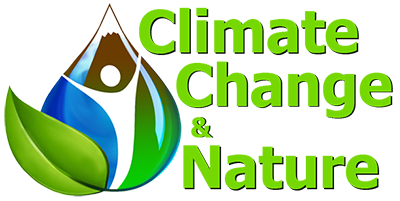Summary
- Ozone in the lower atmosphere (troposphere)(Fig. 1) is a greenhouse gas that absorbs some infrared energy from Earth, re-radiating it into the atmosphere. Due entirely to the way it chemically interacts with man-made emissions—including methane, nitrous oxide, and carbon monoxide—because ozone is a short-lived gas, its concentration varies enormously in different places, times, and seasons.
- Ozone in the upper atmosphere (stratosphere)(Fig. 1), protects the DNA of plants and animals from harmful solar radiation. Without it, life on the surface of the Earth wouldn’t be able to exist. The Montreal Protocol aims to protect the ozone layer by phasing out the use of man-made chemicals (CFCs) that deplete it. This has helped prevent large quantities of carbon dioxide in plants and soils from being released into the atmosphere, which would have resulted in even more warming:
The avoided ultraviolet radiation and climate change also have co-benefits for plants and their capacity to store carbon through photosynthesis…we estimate that there could have been 325–690 billion tonnes less carbon held in plants and soils by the end of this century (2080–2099) without the Montreal Protocol (as compared to climate projections with controls on ozone-depleting substances).- Young et al, 2021
Ozone depletion is not only a serious health threat but can also affect the climate. Atmospheric chemistry models reveal that springtime Arctic ozone depletion can have major consequences for the seasonal climate in the Northern Hemisphere, including warming over Eurasia and drying across central Europe. – Nature Geoscience, 2022
- This underscores the point that greenhouse gases are not inherently ‘bad’. Rather, that human activities have and continue to change the balance of gases in the atmosphere, causing a complex array of problems for life on Earth.
- Unfortunately, in spite of the international Montreal Agreement to stop using ozone-depleting gasses that destroy ozone on the troposhere, the hole in the ozone layer over the Arctic grew to a record size in 2020 (top image).
The South-Eastern Australian
bushfires 2019-2020 released smoke particles into the Earth’s upper
atmosphere that contributed to the highest recorded temperature in the
lower stratosphere since the early 1990s, and could have extended the
lifetime of the Antarctic ozone hole. – Damany- Pierce et al, 2022
Ongoing emissions of CFCs may negate
some of the benefits gained under the Montreal Protocol if they continue
to rise. In addition, the climate impact of the emissions of these CFCs
needs to be considered, as their 2020 emissions are equivalent to
47 ± 5 TgCO2. – Western et al, 2023
Since
2018, SpaceX has placed more than 7,000 Starlink satellites into Earth
orbit, and now they are starting to come down. In January 2025 alone,
more than 120 reentered the atmosphere where they disintegrate. Each
Gen1 satellite produces ~30kg of aluminum oxide, a compound that eats
away at the ozone layer. A 2023 study finds these oxides have increased 8-fold 2016 – 2022, and the recent surge is increasing the pollution even more. – SpaceWeather, 06 Feb. 2025


